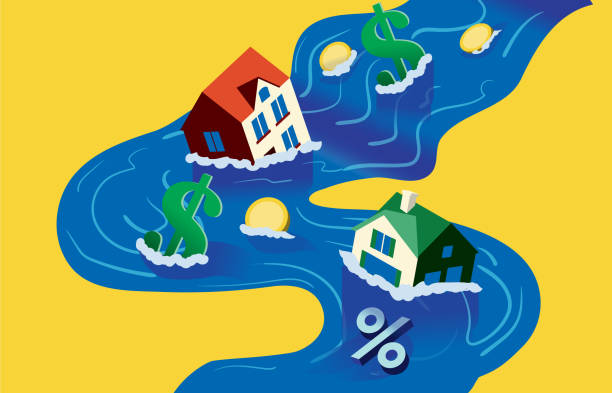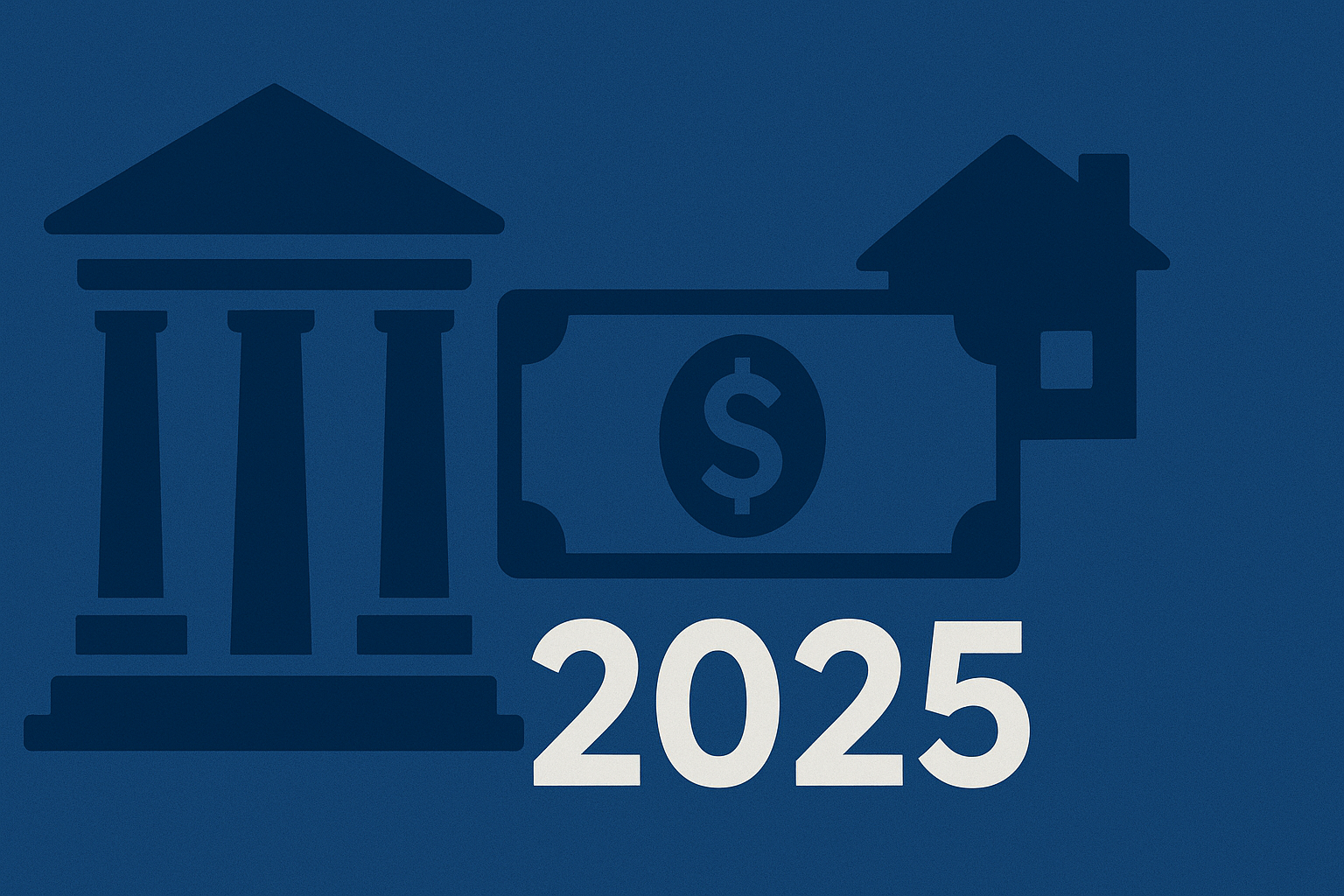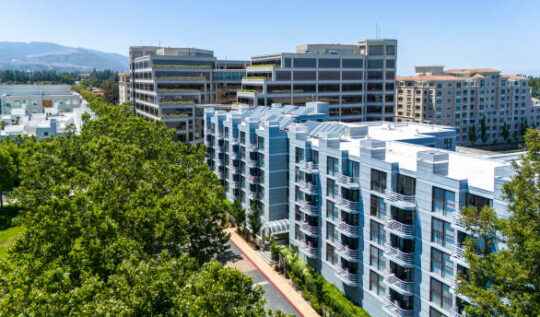The Real Cost of Buying a House in California (2025 Edition)
The dream of owning a house in California often starts with a number — the listing price. But seasoned buyers, investors, and consultants will tell you the real cost of ownership goes far beyond what you see on Zillow or Redfin.
Table of Contents
ToggleIn 2025, California remains one of the most expensive states in the nation to buy a home. According to the California Association of Realtors (CAR), the statewide median home price in June 2025 hovered near $860,000, with Los Angeles County averaging above $925,000. San Francisco and San Jose are even higher, often topping $1.3 million. For first-time buyers, these numbers can feel intimidating, and the focus often becomes saving for that massive down payment.
But here’s the truth: the down payment and mortgage are just the beginning. Ownership brings a cascade of other expenses — property taxes, closing costs, insurance premiums, HOA fees, and sometimes tens of thousands in permitting or renovation bills. Many of these costs remain invisible until a buyer is deep in the process.
📊 California Median Home Prices (2019–2025)
At JDJ Consulting, we’ve seen too many clients surprised by these “hidden” layers of expense. A young couple may stretch to afford the purchase, only to realize that wildfire insurance doubles their monthly budget. An investor may buy a fixer-upper, only to be caught in a six-month permitting battle with the city. In both cases, the lack of upfront planning transforms what should have been a smart investment into a financial burden.
This guide breaks down the true cost of buying a house in California in 2025. We’ll examine visible costs, hidden expenses, and long-term financial commitments, while also showing how expert guidance can prevent costly mistakes. Whether you’re a first-time buyer or a seasoned investor, understanding the complete picture is your best defense against regret.
The Visible Costs of Buying a House in California
When most people think of buying a home, they focus on the headline numbers: the purchase price and the mortgage. While these are undeniably major expenses, they are only the tip of the iceberg. Let’s start with the visible costs every buyer faces.

The Listing Price and Market Premiums
The listing price is rarely the final purchase price in California. In competitive regions like Los Angeles, Orange County, and the Bay Area, homes often sell 5–10% above asking price. A CAR report from early 2025 showed that nearly 45% of homes in Los Angeles sold above list price, driven by tight inventory and investor competition.
Consider this: a home listed at $900,000 may realistically sell for $950,000 or more. For buyers already stretching their budgets, this difference can be a dealbreaker. It also pushes up the required down payment. A standard 20% down payment on $900,000 is $180,000. If bidding drives the final price to $950,000, that upfront cost jumps to $190,000 — an extra $10,000 many buyers didn’t plan for.
This is where JDJ often steps in with strategic market insights. Instead of chasing bidding wars blindly, we encourage clients to evaluate the bigger financial picture: not just the price today, but the long-term feasibility of ownership, including taxes, renovations, and compliance.
Closing Costs and Escrow Fees
Beyond the purchase price, buyers in California should expect to pay 2–5% of the home’s value in closing costs. On a $900,000 purchase, that’s anywhere from $18,000 to $45,000. These costs include:
Escrow fees: typically split between buyer and seller.
Title insurance: protects against ownership disputes.
Loan origination fees: charged by the lender.
Recording and transfer taxes: vary by county and city.
For example, Los Angeles charges a documentary transfer tax of $1.10 per $1,000 of property value, plus additional city-level taxes. San Francisco has some of the highest transfer taxes in the nation, scaling up with property price.
Many first-time buyers overlook these costs, assuming they’re minor. But when you’re already writing a check for six figures on a down payment, another $30,000 can feel crushing.
At JDJ Consulting, we advise clients to budget 5% of the purchase price for closing and escrow — even if you end up spending less. It’s a conservative approach, but it prevents last-minute financial strain during the most critical stage of the transaction.
Mortgage Expenses and Interest Rates
In 2025, interest rates remain a defining factor in California home affordability. While rates have cooled slightly from the 2023–2024 peak, the average 30-year fixed mortgage in mid-2025 still sits around 6.2–6.5% according to Freddie Mac.
For a $900,000 home with a 20% down payment ($720,000 loan), that means a monthly mortgage payment of roughly $4,400–$4,600 — before taxes and insurance. Stretch the budget further with a $1.2 million home, and payments can easily exceed $6,000/month.
Buyers often underestimate how small changes in interest rates impact affordability. For instance:
At 5.5%, that $720,000 loan costs about $4,090/month.
At 6.5%, it costs about $4,550/month.
That $460/month difference adds up to over $165,000 more over 30 years.
This is why JDJ encourages clients to plan beyond the initial “can we qualify?” question. The real test is: can you comfortably sustain ownership at current and future interest rates, while also managing the hidden costs that follow?
The Hidden Costs Most Buyers Overlook
While listing prices and mortgages get the headlines, the true shock for many California homeowners comes after closing. These hidden costs creep up month by month, and without preparation, they can destabilize even the best-laid budgets.

Property Taxes in California
California’s Proposition 13 stabilizes property taxes at 1% of assessed value, plus local bonds and assessments. On a $900,000 home, that means a base annual tax of about $9,000 — or $750/month.
But here’s the catch: new buyers often get hit with a supplemental property tax bill within the first year, because the property is reassessed at the purchase price. For example, if a seller’s long-held property was assessed at $400,000 and you bought it for $900,000, you’ll face a supplemental bill to cover that gap. Many new homeowners mistake this for a clerical error when it arrives, only to realize it’s legally owed.
According to the California State Board of Equalization, supplemental taxes can add thousands of dollars in the first year alone. JDJ advises clients to plan for this upfront, especially when purchasing older homes in gentrifying neighborhoods where assessed values lag far behind market prices.
Insurance and Natural Disaster Premiums
If you’re buying in California, you can’t ignore insurance. Wildfires, earthquakes, and floods all carry heavy premiums.
Wildfire Insurance: In 2024, State Farm and Allstate both pulled back from issuing new homeowner policies in high-risk fire zones. Buyers in areas like Malibu, Topanga, and Pacific Palisades often turn to the California FAIR Plan, which can cost $4,000–$7,500 annually.
Earthquake Insurance: Only about 11% of California homeowners carry earthquake coverage, largely because it can add $2,000–$5,000 per year depending on location and deductible.
Flood Insurance: Required in designated FEMA flood zones; premiums average $800–$1,500 annually.
For a Los Angeles buyer, combining standard homeowner’s insurance with wildfire or earthquake add-ons can raise monthly housing costs by $400–$800.
JDJ frequently warns clients: insurance is no longer optional budgeting. In fact, in 2025, some lenders refuse to close loans without robust disaster coverage.
HOA Fees and Community Costs
In California’s condo-heavy and master-planned communities, HOA fees are another major hidden cost. These can range from $200 to $1,000+ per month, depending on amenities. In luxury developments, fees may exceed $1,500 monthly.
Beyond cost, HOAs also control design approvals. Buyers dreaming of renovations — adding solar panels, expanding square footage, or installing an ADU — often face HOA restrictions that stall or block their plans.
This is where JDJ steps in with early feasibility analysis. We evaluate not just city zoning laws but also HOA covenants, conditions, and restrictions (CC&Rs) that could derail your plans. Buyers who overlook this risk sometimes discover they’ve purchased a “dream home” they can’t legally remodel.
🔄 Steps in Buying a California Home
- 🏦 Step 1: Save for Down Payment (5–20%)
- 📑 Step 2: Budget for Closing Costs (2–5%)
- 📋 Step 3: Get Pre-Approval from a Lender
- 🏡 Step 4: Work with a Real Estate Agent
- 💰 Step 5: Cover Property Taxes & Ongoing Housing Costs
Renovation, Remodeling, and Compliance Costs
For many California buyers, especially in Los Angeles, the real estate strategy is buy, renovate, and build equity. But here’s the truth: renovations rarely come cheap, and compliance with city regulations can easily double projected costs.
Permits and City Fees
Every improvement — from a kitchen remodel to an ADU — requires navigating California’s maze of permits.
Kitchen remodel: permits and plan check fees can add $2,000–$5,000.
ADU (Accessory Dwelling Unit): permit costs range from $8,000–$15,000 in Los Angeles, before construction even begins.
Room addition/expansion: expect $10,000–$20,000 in city fees, not including design and construction.
On top of fees, plan check timelines often stretch for months. According to LA City Planning’s 2025 data, average wait times for residential plan approvals are 12–18 weeks. For larger projects, delays can push past 6 months.
This is exactly why JDJ Consulting emphasizes permit expediting. By handling paperwork, coordinating with city officials, and anticipating red flags, we cut through bureaucratic delays that frustrate buyers and inflate budgets.
Zoning and Entitlement Challenges
California’s zoning laws are notoriously complex. Even when the state passes laws like SB 9 (designed to increase housing density), local governments layer on restrictions.
Example: In early 2025, Los Angeles restricted SB 9 developments in Very High Fire Hazard Severity Zones (VHFHSZ), eliminating the possibility of lot splits in areas like Pacific Palisades. A buyer banking on building a duplex there may discover their plan is illegal after closing.
Entitlement issues also affect remodeling. Historic preservation overlays (HPOZs) in neighborhoods like Hancock Park mean even replacing windows requires special approval. JDJ routinely sees buyers underestimate these costs — one project faced $30,000+ in redesign fees after the city rejected non-compliant plans.
Unexpected Construction Expenses
Even after permits are in hand, construction in California is expensive.
Average home remodel: $300–$500 per square foot in Los Angeles.
Luxury finishes: up to $800 per square foot.
Utility connections or upgrades: trenching for sewer or electrical can add $20,000–$50,000.
Supply chain disruptions and labor shortages, still lingering from the pandemic, mean cost overruns are common. According to the Associated General Contractors of California, residential projects exceeded budget by an average of 15–20% in 2024.
At JDJ, we stress the importance of realistic feasibility studies before purchase. Knowing whether a property can support an ADU, whether utilities can handle expansions, and what city restrictions exist can save buyers from six-figure surprises.
Lifestyle and Long-Term Ownership Costs
Owning a home in California is not just a financial transaction; it’s also a lifestyle choice. Beyond the mortgage, taxes, and permits, everyday living expenses tied to location and upkeep add another layer to the “real cost” equation.

Commuting, Transportation, and Location Premiums
California’s geography makes commuting costs a significant part of homeownership. A family buying in Riverside or Palmdale for affordability may save on the purchase price but spend $400–$600 monthly in gas, tolls, and car maintenance commuting to Los Angeles.
In fact, the U.S. Census Bureau’s 2024 American Community Survey found that California workers face one of the nation’s longest average commutes, at 31.5 minutes each way. That’s time and money often left out of housing budgets.
Location also impacts property value. Homes within walking distance of LA Metro rail stations or major job hubs often command a 10–15% premium, according to Metro’s 2024 Transit-Oriented Development Report. Buyers must weigh whether paying more upfront for location saves money long-term.
Maintenance and Upkeep
National surveys suggest homeowners should budget 1–3% of their home’s value annually for maintenance. In California, where home prices are higher, this adds up fast.
$900,000 home = $9,000–$27,000 per year.
Common costs: roof repairs, plumbing upgrades, HVAC replacements, landscaping, and pest control.
Pools are particularly popular in Southern California, but upkeep costs average $3,000–$5,000 per year. Termite control is another hidden cost, as infestations are common in the state’s warmer climates.
Buyers who don’t budget for maintenance risk being “house poor” — owning the asset but lacking funds to sustain it. JDJ often advises clients to factor in maintenance as part of the affordability test, not as an afterthought.
Energy and Sustainability Upgrades
California’s sustainability mandates create both savings and upfront costs. Since 2020, the state has required most new homes to include solar panels. For existing homes, buyers often retrofit solar and energy-efficient systems, sometimes because of incentives, sometimes because of utility bills.
Solar installation: $15,000–$25,000 upfront, though state rebates and federal tax credits reduce this.
Energy-efficient HVAC: $8,000–$12,000.
Water conservation: turf replacement, drip irrigation systems, and drought-tolerant landscaping can add $10,000–$20,000.
While these upgrades reduce monthly bills — for example, solar can cut electricity bills by $100–$250/month — the initial cost is substantial. JDJ works with buyers to estimate ROI timelines for these upgrades so they know whether they’ll break even in five, ten, or fifteen years.
How JDJ Consulting Helps Buyers Plan Smart
Most buyers approach the market thinking in terms of sticker price and loan approval. JDJ Consulting helps shift the mindset: the true measure of affordability is not can I buy this house today, but can I sustainably own and improve it tomorrow.

Due Diligence Before You Buy
JDJ specializes in pre-purchase feasibility studies. These reports go beyond a realtor’s market analysis to identify:
Zoning restrictions and entitlement risks.
Potential permit hurdles for remodels or ADUs.
Insurance requirements based on location.
HOA limitations on property use.
For example, one client considered a duplex conversion in Highland Park. JDJ’s early due diligence flagged historic preservation overlays that would have made expansion nearly impossible. The client walked away before sinking money into a dead-end project.
Navigating City Planning & Permitting
City permitting is one of the biggest financial drains for buyers who plan renovations. JDJ’s permit expediting services streamline this process by:
Coordinating directly with Los Angeles City Planning.
Preparing compliant documentation upfront.
Anticipating common rejection points.
This often saves clients 3–6 months of delays, which translates into tens of thousands in holding costs and contractor scheduling issues.
Investor & Homeowner Guidance
JDJ works with both individual homeowners and investors. For homeowners, the focus is on avoiding surprises that lead to financial strain. For investors, it’s about maximizing ROI through smarter acquisitions and entitlement strategies.
Homeowners: guidance on budgeting for property taxes, insurance, and compliance.
Investors: insight on which neighborhoods allow ADUs, density increases, or lot splits for profitable projects.
The underlying philosophy is the same: a house is more than a purchase — it’s an investment in lifestyle, stability, and long-term value. JDJ positions clients to see the whole picture, not just the listing price.
Case Studies & Real-Life Scenarios
Numbers and data matter, but stories bring the realities of California homeownership to life. Below are real-world scenarios that mirror the challenges our clients face — and how the right guidance makes the difference between a financial strain and a smart investment.
Case Study 1: The Supplemental Tax Shock
Profile: Young couple buying their first home in Pasadena.
Purchase Price: $875,000
Down Payment: $175,000
After closing, they expected stable monthly expenses. Instead, three months later, they received a supplemental property tax bill of $6,200. Because the seller’s property had been assessed decades earlier at $350,000, the reassessment to $875,000 triggered a one-time supplemental charge.
Without savings set aside, this unexpected bill caused immediate financial stress.
How JDJ Would Help: In our pre-purchase analysis, we flag supplemental tax estimates for buyers. This couple would have budgeted for the tax in advance, avoiding the surprise and keeping their finances balanced.
2nd Case Study: Insurance in a Fire Zone
Profile: Investor purchasing a hillside home in Malibu for rental income.
Purchase Price: $1.6 million
Mortgage: $1.28 million
During escrow, the investor discovered that major insurers had pulled out of the area. The only option was the California FAIR Plan at $6,800/year, plus excess coverage for liability. Combined, this raised his monthly costs by $750 — wiping out projected rental cash flow.
How JDJ Helped: We guided him through the insurance landscape before closing. By adjusting his rental strategy and marketing to high-income tenants willing to pay premium rents, he kept the investment profitable. Without this foresight, he may have abandoned the deal mid-escrow, losing deposits and time.
Case Study 3: HOA Restrictions Block Renovation
Profile: Family buying a condo in a gated Orange County community.
Purchase Price: $720,000
Goal: Add solar panels and remodel kitchen.
The HOA denied their solar installation request due to strict aesthetic rules, and the kitchen remodel required pre-approval of plans, adding months of delay. Costs for architectural drawings and resubmissions reached $12,000 before construction even started.
How JDJ Would Help: By reviewing HOA CC&Rs before purchase, JDJ could have warned the buyers that their renovation goals conflicted with HOA rules. This knowledge would have shaped their decision or negotiation strategy.

Case Study 4: Entitlement Delays on an ADU Project
Profile: Investor purchasing a single-family home in Los Angeles with plans to add an ADU.
Purchase Price: $950,000
Renovation Budget: $150,000
The investor assumed the ADU could be built within 6 months. But zoning restrictions required a detailed environmental review because the property bordered a hillside. The project stalled for nearly 9 months, during which the investor paid mortgage, taxes, and insurance with no rental income.
Total Holding Costs Lost: Over $45,000.
How JDJ Helped: Our zoning and entitlement check flagged the hillside restriction before purchase. We recommended an alternate property where ADU construction was permitted outright, saving time and money.
5th Case Study: The Maintenance Budget Gap
Profile: Retired couple buying a $1 million home in Palm Springs.
They budgeted carefully for mortgage and taxes but overlooked maintenance. Within the first year, they faced:
Roof repair: $12,000
HVAC replacement: $9,500
Pool resurfacing: $8,000
That’s nearly $30,000 in unplanned costs.
How JDJ Would Help: In our buyer consultations, we recommend setting aside 1–3% of property value annually for maintenance. For a $1 million home, that’s $10,000–$30,000/year. Planning ahead keeps retirees from draining emergency funds.
Takeaway: These stories illustrate how the real cost of buying is shaped not just by the purchase price, but by taxes, insurance, compliance, and upkeep. Each example underscores why professional due diligence, like JDJ provides, is not an extra step — it’s a safeguard against expensive mistakes.
🏡 California Home Cost Estimator
(Based on principal, interest rate, and loan term)
Strategies to Reduce the Real Cost of Buying
Owning in California will never be “cheap.” But smart strategies can reduce the burden, protect your budget, and increase long-term returns.
Smart Negotiation Tactics
Even in a competitive market, buyers have leverage.
Closing Cost Credits: In slower submarkets (like parts of Inland Empire in 2025), sellers sometimes agree to cover 1–2% of closing costs. On a $900,000 purchase, that’s $9,000–$18,000 in savings.
Inspection Contingencies: Use inspection findings (roof age, HVAC issues) to negotiate credits or price reductions.
Seller-Paid Buydowns: Some sellers agree to temporarily “buy down” the mortgage rate for 1–3 years, saving buyers thousands in early payments.
JDJ helps clients frame these negotiations strategically, showing sellers that credits or concessions make deals smoother without derailing the sale.
Tax Planning and Incentives
Homeownership in California comes with tax advantages if used wisely.
Mortgage Interest Deduction: For loans up to $750,000, buyers can deduct interest.
Property Tax Deduction: State and local taxes (SALT) deductions are capped federally at $10,000, but still meaningful.
Energy Credits: Federal solar tax credit in 2025 remains at 30% of installation costs, potentially saving $6,000–$7,000 on a $20,000 system.
JDJ collaborates with tax professionals to align property planning with tax savings, ensuring clients maximize incentives instead of leaving money on the table.
Using Consultants as a Cost-Saving Tool
Some buyers see consulting as an “extra expense.” In reality, it’s a multiplier.
Spending $3,000–$5,000 on feasibility and permitting consultation can save buyers $30,000–$100,000 in wasted construction or compliance mistakes.
Permit expediting services prevent months of delays, reducing holding costs for investors.
Zoning analysis identifies profitable opportunities like ADU potential or SB 9 lot splits before purchase.
As JDJ frames it: we’re not a cost — we’re an investment in avoiding bigger costs.
Conclusion: The Real Cost Is More Than the Price Tag
Buying a house in California in 2025 is one of the most significant financial decisions most people will ever make. The purchase price grabs attention, but as we’ve seen, the real cost is layered: closing fees, property taxes, insurance, HOA dues, maintenance, and the often underestimated expense of permits and compliance. Each of these adds complexity to ownership — and each carries the potential to derail your budget if overlooked.
The California Association of Realtors notes that just 16% of households in the state can afford a median-priced home at current interest rates. That statistic underscores why planning matters. Stretching for a mortgage only to be blindsided by $20,000 in renovation delays or a $7,000 insurance bill is not sustainable.
At JDJ Consulting, we believe the smartest buyers are the ones who prepare for more than the down payment. We help clients anticipate supplemental property taxes, calculate true insurance needs, and map out feasible renovation strategies before they close. We bring clarity to zoning and entitlement risks, and we save investors from losing time and money in city planning bottlenecks.
The reality is simple: you can’t change California’s high housing prices, but you can control how prepared you are for the hidden costs. That preparation makes the difference between being house-poor and building wealth through smart ownership.
If you’re considering buying in Los Angeles, San Francisco, San Diego, or anywhere in between, don’t go in blind. Let JDJ Consulting guide you through the full financial landscape so your purchase isn’t just possible, but sustainable.
Ready to make your California homeownership journey smarter? Contact JDJ Consulting today for a consultation that could save you thousands tomorrow. Call us at (818) 793-5058 to get started today!
📋 Quick Quiz: Are You Ready to Buy?
👉 If you answered mostly Yes, you may be ready to buy!
📢 Thinking of Buying in California?
JDJ Consulting can help you navigate real estate market conditions, manage closing costs, and assess investment potential.
FAQs: Real Cost of Buying a House in California
How much should I budget for closing costs in California?
In California, closing costs typically range from 2% to 5% of the purchase price. For a $800,000 home, expect between $16,000 and $40,000.
Includes lender fees, escrow, appraisal, and title insurance.
Some costs are negotiable, but most are required.
Are property taxes higher in California compared to other states?
California property taxes are capped at 1% of assessed value under Proposition 13, plus local assessments. However, housing prices make the bills large.
Example: A $900,000 home = about $9,000/year.
Buyers should also plan for a supplemental property tax bill after purchase.
What hidden costs surprise most California homebuyers?
Beyond mortgage and taxes, many buyers forget recurring and compliance costs:
HOA fees (from $200–$1,000/month).
Insurance premiums (wildfire, earthquake, flood).
City permit fees for renovations.
Ongoing maintenance and repairs.
Do I need earthquake insurance when buying in California?
It isn’t legally required, but it’s highly recommended in high-risk areas.
Average premium: $800–$1,500 per year.
Standard homeowner’s insurance does not cover earthquake damage.
Some buyers opt for parametric earthquake insurance for faster payouts.
How do HOA fees affect the real cost of ownership?
HOA fees vary widely depending on the community and amenities.
Condos in Los Angeles: $400–$700/month on average.
Luxury communities: $1,000+ per month.
HOAs can also levy special assessments for major repairs.
What renovation costs should I expect after buying?
Renovation costs depend on scope and city regulations. Typical ranges:
Kitchen remodel: $25,000–$60,000.
Bathroom remodel: $15,000–$40,000.
ADU construction: $100,000–$250,000.
Always factor in permits, zoning reviews, and inspections, which add thousands more.
Are permits really necessary for small projects in California?
Yes, many cities require permits even for “minor” updates.
Electrical, plumbing, structural, and window replacements usually need permits.
Fines and delays are common for unpermitted work.
Consulting a permit expeditor (like JDJ) can prevent costly mistakes.
How do lifestyle choices increase the cost of owning a California home?
Beyond fixed costs, lifestyle factors affect affordability:
Commuting distance = higher fuel or EV charging bills.
School district = higher property prices or private tuition.
Energy use = higher solar or utility bills.
Location = higher insurance if near wildfire or flood zones.
Is it cheaper to buy or rent in California in 2025?
According to housing economists, renting is still cheaper in many metro areas, but buying builds equity.
Median rent in Los Angeles: ~$3,000/month.
Median mortgage payment (with 20% down): ~$4,200/month.
Buying makes sense if you’ll stay 7+ years and can handle hidden costs.
💸 Average Property Taxes by County
Source: Tax Foundation
What financial strategies help reduce the real cost of buying?
Smart planning helps offset California’s high costs:
Compare lenders for lower mortgage rates.
Apply for first-time buyer assistance programs.
Invest in energy-efficient upgrades (solar, insulation).
Work with consultants to avoid permit and zoning delays.
How can JDJ Consulting help California homebuyers?
JDJ Consulting specializes in guiding buyers through hidden ownership costs.
Zoning and entitlement reviews.
Permit expediting for renovations or ADUs.
Feasibility studies before purchase.
Cost-saving strategies on taxes and compliance.
What is the biggest mistake California buyers make when calculating costs?
The most common mistake is focusing only on the purchase price.
Buyers forget ongoing costs like taxes, HOA dues, insurance, and permits.
Many underestimate maintenance, which averages 1% of home value per year.
Not budgeting for compliance delays often leads to thousands in surprise expenses.
What is the average down payment needed to buy a house in California?
Most California home buyers put down between 10% and 20% of the purchase price. With median home prices in Los Angeles and the Bay Area exceeding $900,000 in 2025, that means:
10% down = about $90,000
20% down = about $180,000
Some programs, like FHA loans or California first-time homebuyer assistance, allow as little as 3.5% down, but higher down payments usually mean lower monthly payments and reduced risk of private mortgage insurance (PMI).
How much are property taxes on a California home?
California’s property tax system is governed by Proposition 13, which generally sets the tax rate at 1% of assessed value plus local levies. For example:
$800,000 home = about $8,000 yearly in property taxes
Taxes increase slightly each year, capped at 2%
New buyers often pay more than long-term owners because of reassessment rules
It’s important to budget for property taxes as part of ongoing housing costs.
Do closing costs add much to California home prices?
Yes, closing costs in California typically range from 2% to 5% of the purchase price. Buyers in Los Angeles or San Francisco may pay:
Loan origination fees
Escrow fees and title insurance
Transfer taxes (especially in high-cost counties)
Prepaid property taxes and homeowners insurance
On a $1 million home, that could mean $20,000 to $50,000 in additional upfront expenses.
How do mortgage interest rates affect monthly payments?
Even a small change in interest rate significantly impacts affordability. For example:
At 6% on a $700,000 loan → ~$4,200 monthly payment
At 7% on the same loan → ~$4,650 monthly payment
With California’s home prices already high, buyers must pay close attention to mortgage rates, especially as the Federal Reserve continues to influence borrowing costs.
Why are housing costs higher in San Francisco and the Bay Area?
The Bay Area has some of the highest median home prices in the Golden State due to:
Strong job market in tech and biotech
Limited housing supply and zoning restrictions
High demand from investors and international buyers
As of mid-2025, San Francisco’s median home price hovers around $1.2 million, compared to about $900,000 in Los Angeles. Buyers here should also expect higher HOA fees and insurance premiums.





